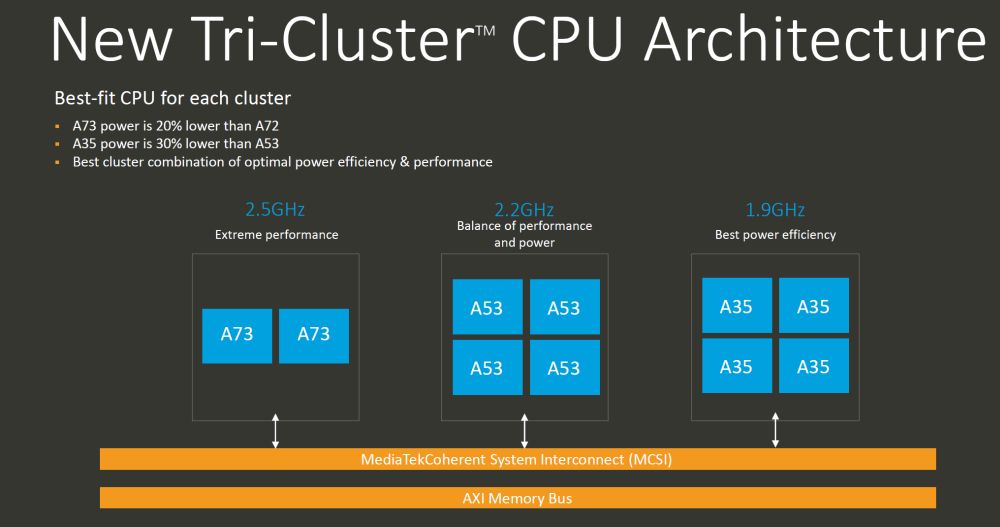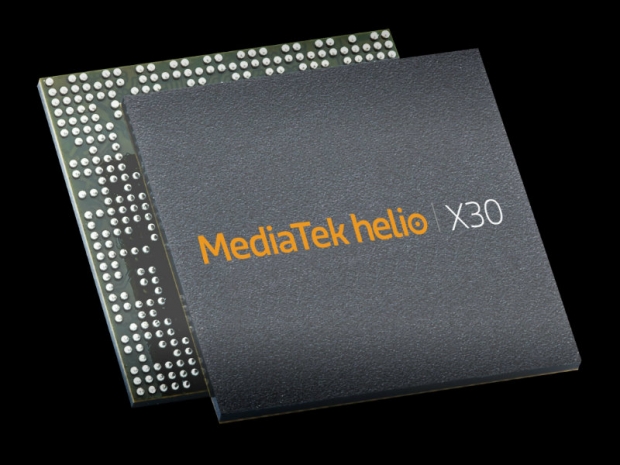Company’s Executive Vice President & Co-COO Jeffrey Ju took to the stage to talk about the Helio X30, showing even a cake shaped in the Helio X30 design, promising better performance at lower power.
MediaTek was the first company to introduce deca-core with three cluster design last year with the Helio X20 series. The new 10nm Helio X30 is following the tradition.
The Helio X30 has two Cortex A73 at 2.5 GHz for extreme performance, four Cortex A53 with 2.2 GHz clock and energy aware Cortex A35 at 1.9 GHz for better power efficiency.
MediaTek points out that the Cortex A73 has 20 percent lower power than A72 and that the A35 has 30 percent lower power than the A53. This definitely sounds promising, and of course MediaTek came up with the CorePilot 4.0 scheduler.
CorePilot 4.0 continually monitors activities on the device to deliver the best user experience while saving power whenever possible.
The result is according to MediaTek's own testing, the peak power on the Helio X30 is up to 50 percent lower compared to peak power on the Helio X20. This is a huge achievement as you can imagine. In some benchmarks such as GeekBench v4 you can expect up to 35 percent better performance in Multi-Thread. You should see a 35 percent performance increase compared to the previous generation.

The GPU performance got increased due to a new Imagination PowerVR Series7XT MT4 clocked at 800MHz. This GPU is tailored for Helio X30 and offers between 60 percent and 2.4 times faster GPU performance. Things got improved a lot at this end.
Modem got improved as well as MediaTek uses World Mode Cat.10 modem supporting three downlink Carrier Aggregation (3CA) and two uplink Carrier Aggregation (2CA). Things are improving on the connectivity end too.
MediaTek Helio X30 also incorporates Imagiq 2.0 with 14-bit 16+16MP dual camera and delivers advanced functionality such as wide + zoom combination lenses for real-time depth of field effects, fast auto exposure and real-time de-noise in low-light condition features.
MediaTek also has the new part of the chip that they call Vision Processing Unit. The VPU paired to the Image Signal Processors (ISP) that provides a dedicated processing platform for numerous camera features, freeing up the CPU and GPU and saving power. There is some Tensilica Vision IP inside but we will talk about this some other time.
Phones based on Helio X30 are expected in Q2 2017 and we have seen the chip and the prototype phones in action. At first glimpse it looks good.




